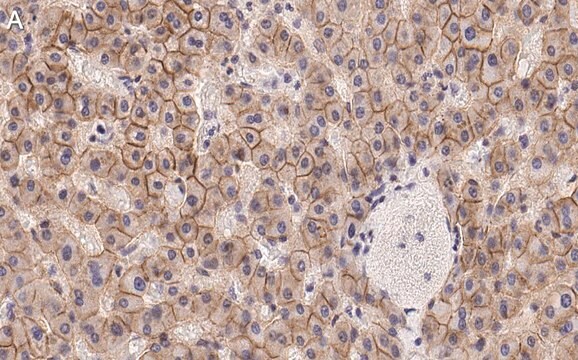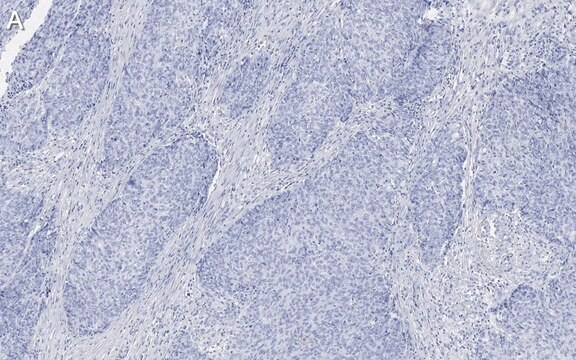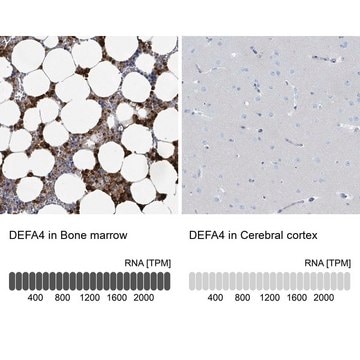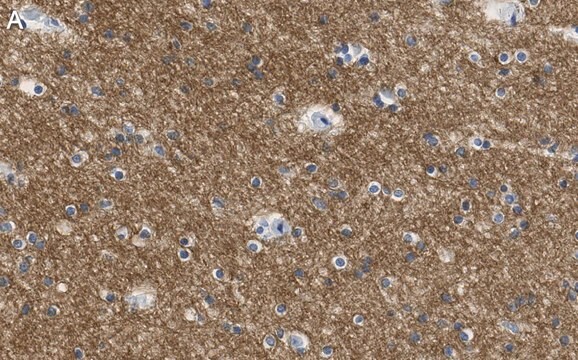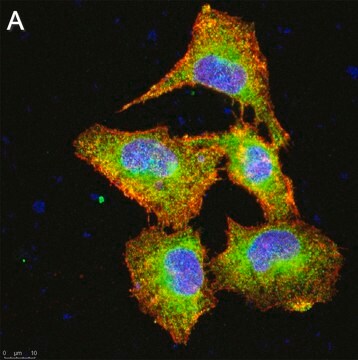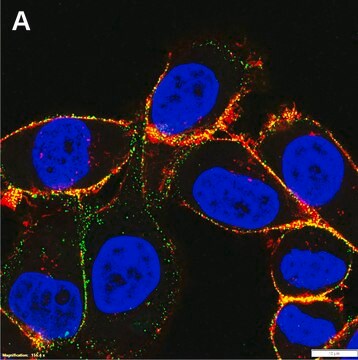General description
We are committed to bringing you greener alternative products, which adhere to one or more of The 12 Principles of Green Chemistry.This antibody is Preservative-free, produced without the harm or sacrifice of animals and exceptionally stable to allow for ambient shipping and storage if needed and thus aligns with "Waste Prevention", "Designing Safer Chemicals" and "Design for Energy Efficiency".
Click here for more information.
ZooMAb® antibodies represent an entirely new generation of recombinant monoclonal antibodies.Each ZooMAb® antibody is manufactured using our proprietary recombinant expression system, purified to homogeneity, and precisely dispensed to produce robust and highly reproducible lot-to-lot consistency. Only top-performing clones are released for use by researchers. Each antibody is validated for high specificity and affinity across multiple applications, including its most commonly used application. ZooMAb® antibodies are reliably available and ready to ship when you need them.
Specificity
Clone 3D11 is a ZooMAb® Rabbit recombinant monoclonal antibody that specifically detects Integrin β4. It targets an epitope within 14 amino acids from the C-terminal region.
Immunogen
KLH-conjugated linear peptide corresponding to 14 amino acids from the C-terminal region of human Integrin-β4.
Application
Quality Control Testing
Evaluated by Western Blotting in A431 cell lysate.
Western Blotting Analysis: A 1:10,000 dilution of this antibody detected Integrin β4 in A431 cell lysate.
Tested applications
Affinity Binding Assay: A representative lot of this antibody bound Integrin β4 peptide with a KD of 1.0 x 10-12 in an affinity binding assay.
Immunohistochemistry (Paraffin) Analysis: A 1:100 dilution from a representative lot detected Integrin β4 in human small intestine tissue sections.
Immunocytochemistry Analysis: A 1:1,000 dilution from a representative lot detected Integrin β4 in A431 cells.
Note: Actual optimal working dilutions must be determined by end user as specimens, and experimental conditions may vary with the end user
Target description
Integrin beta-4 (UniProt: P16144; also known as GP150, CD104) is encoded by the ITGB4 gene (Gene ID: 3691) in human. Integrins are heterodimeric cell surface receptors composed of a variable -subunit and a conserved β-subunit. The exact combination of various - and β-subunits dictates the binding specificity of integrins to different ECM components. Integrins are not constitutively active. Activation of an integrin from low ligand-binding affinity state to high ligand-binding affinity state requires conformational change that can originate from either from their cytoplasmic or extracellular interactions. The recognition site for most integrins that bind the ECM consists of an RGD (arginine-glycine-aspartic acid) sequence. Integrins bind to their ligands with low affinity and this binding occurs only when a certain minimum number of integrins are present at specific points known as focal contacts. Integrin β4, primarily expressed by epithelia, is a single-pass type I membrane glycoprotein that is synthesized with a signal peptide (aa 1-27), which is subsequently cleaved off to generate the mature form that contains an extracellular domain (aa 28-710), a transmembrane domain (aa 711-733), and a cytoplasmic domain (aa 734-1822). It contains four fibronectin type III domains. It undergoes palmitoylation by DHHC3 at several cysteines of the membrane-proximal region that enhances its stability and surface expression. Palmitoylation also promotes its secondary association with tetraspanins. It heterodimerizes with 6 and the heterodimer serves as a receptor for laminin and plays a critical structural role in the hemidesmosome of epithelial cells. The 6β4 heterodimer is also involved in tumorigenesis and invasiveness of many cancers and has a pro-metastatic role. This ZooMAbZooMAb® recombinant monoclonal antibody, generated by our propriety technology, offers significantly enhanced specificity, affinity, reproducibility, and stability over conventional monoclonals. (Ref.: Li, X-L., et al. (2017). Sci. Rep. 7; Article 40464; Yang, X., et al. (2004). J. Cell Biol. 167(6); 1231-1240).
Physical form
Purified recombinant rabbit monoclonal antibody IgG, lyophilized in PBS, 5% Trehalose, normal appearance a coarse or translucent resin. The PBS/trehalose components in the ZooMAb formulation can have the appearance of a semi-solid (bead like gel) after lyophilization. This is a normal phenomenon. Please follow the recommended reconstitution procedure in the data sheet to dissolve the semi-solid, bead-like, gel-appearing material. The resulting antibody solution is completely stable and functional as proven by full functional testing. Contains no biocide or preservatives, such as azide, or any animal by-products. Larger pack sizes provided as multiples of 25 μL.
Reconstitution
300 μg/mL after reconstitution at 25 μL per vial. Please refer to guidance on suggested starting dilutions and/or titers per application and sample type.
Storage and Stability
Recommend storage of lyophilized product at 2-8°C; Before reconstitution, micro-centrifuge vials briefly to spin down material to bottom of the vial; Reconstitute each vial by adding 25 μL of filtered lab grade water or PBS; Reconstituted antibodies can be stored at 2-8°C, or -20°C for long term storage. Avoid repeated freeze-thaws.
Legal Information
ZooMAb is a registered trademark of Merck KGaA, Darmstadt, Germany
Disclaimer
Unless otherwise stated in our catalog or other company documentation accompanying the product(s), our products are intended for research use only and are not to be used for any other purpose, which includes but is not limited to, unauthorized commercial uses, in vitro diagnostic uses, ex vivo or in vivo therapeutic uses or any type of consumption or application to humans or animals.

